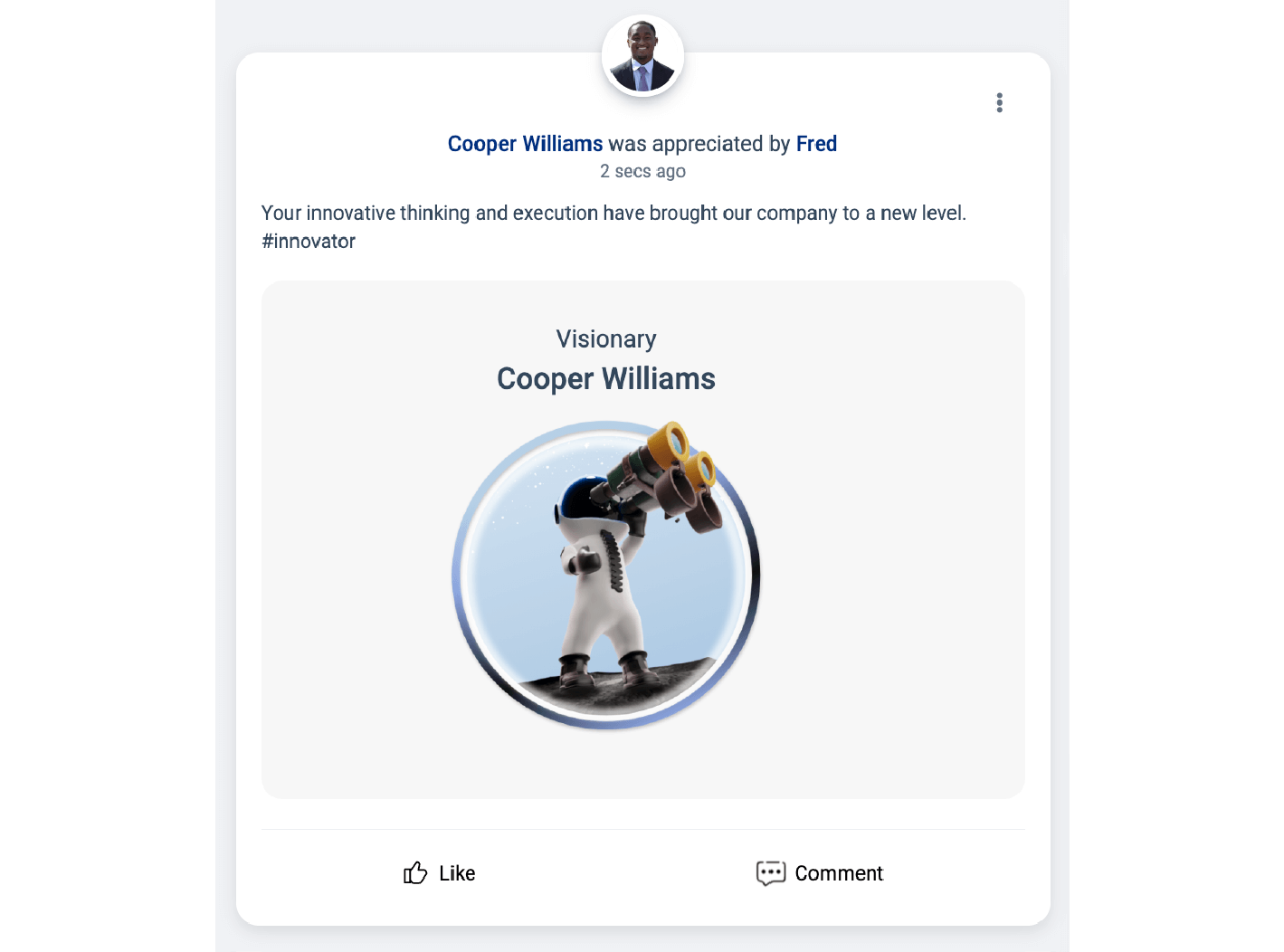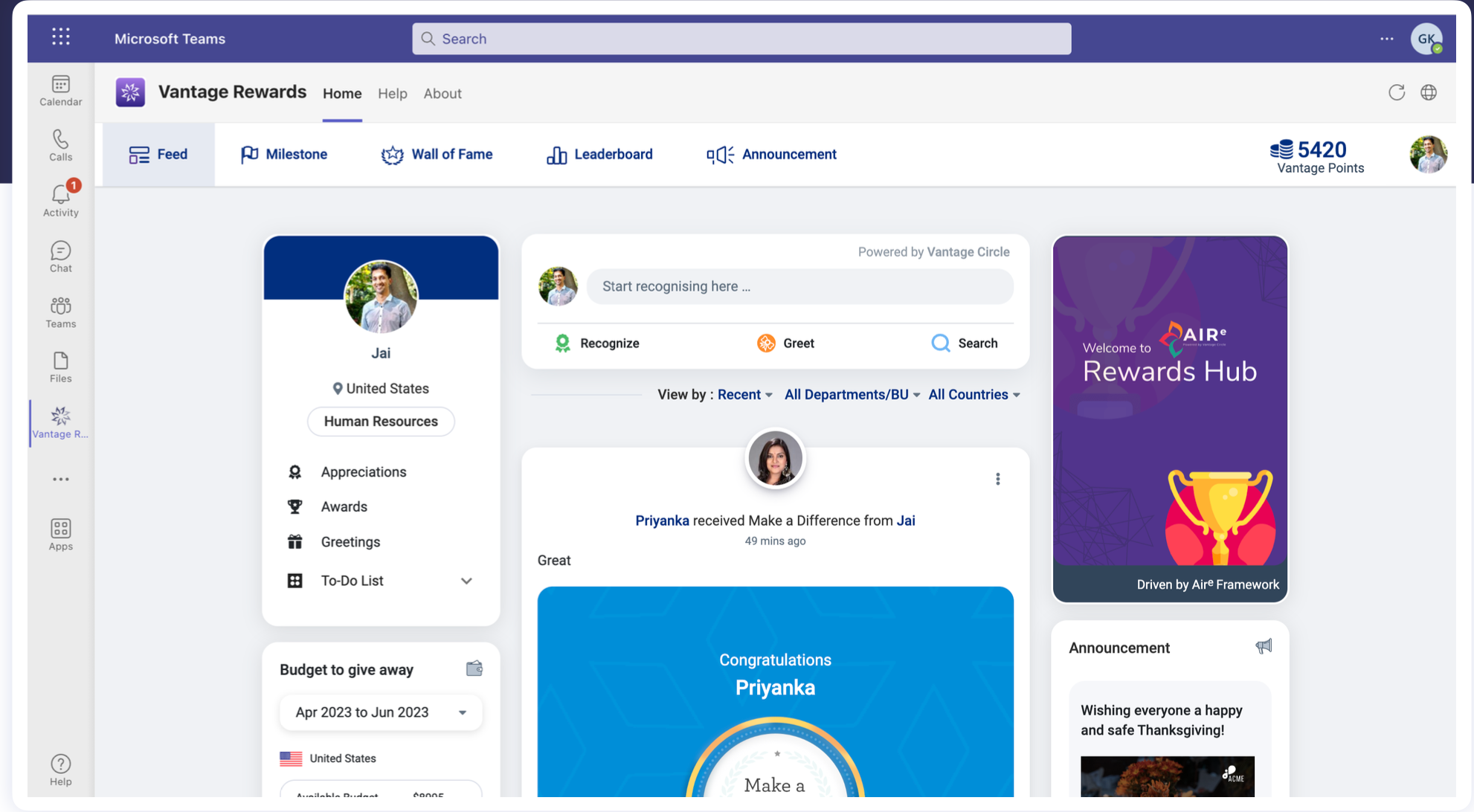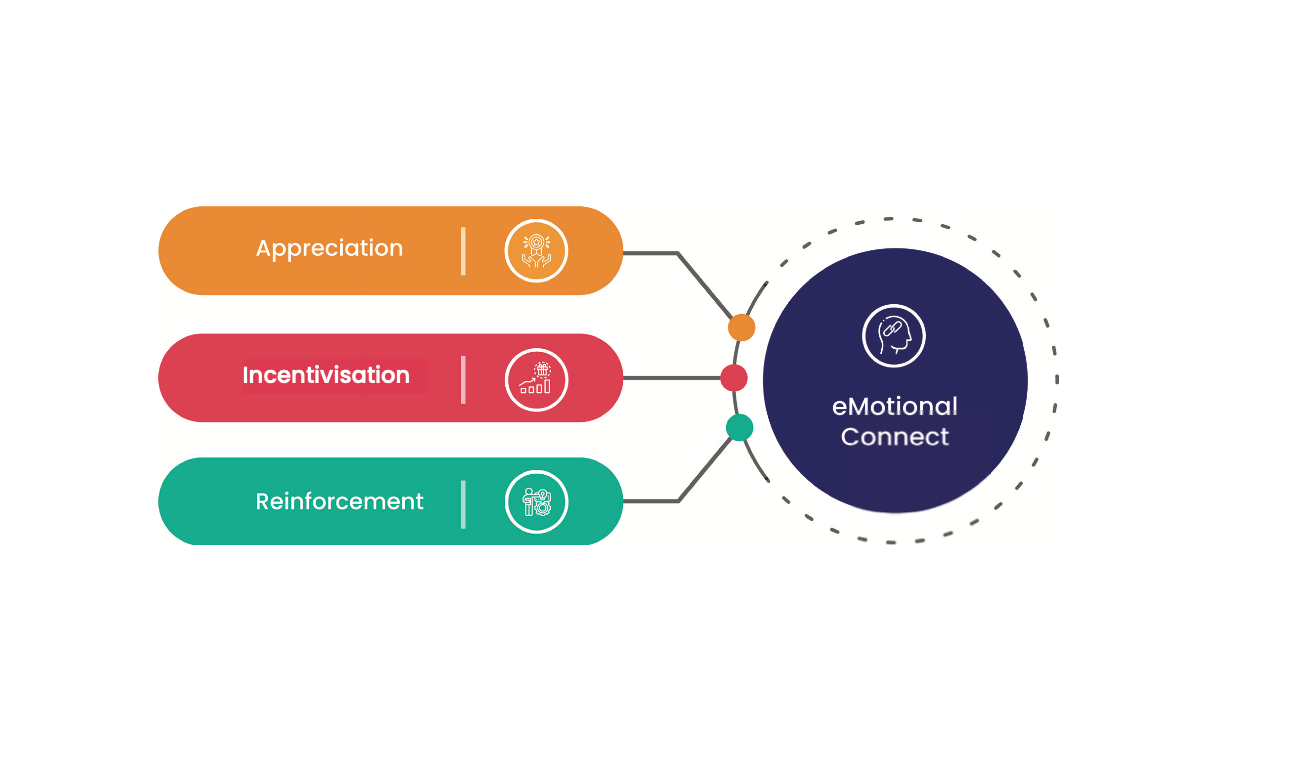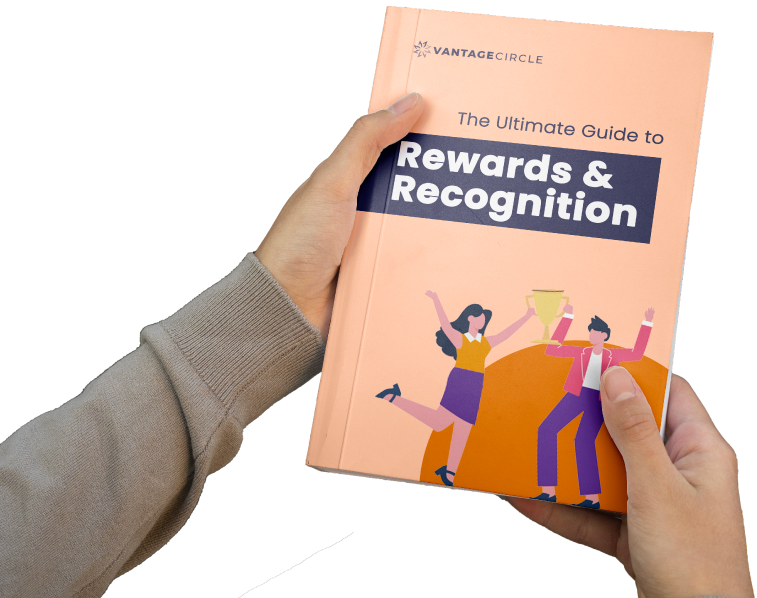15 Common Employee Recognition Mistakes and How to Fix Them

A Global Employee Recognition and Wellness Platform
Employee recognition has become an integral part of an organization that enhances engagement. However, when recognition efforts are undermined by fundamental mistakes, they can have the opposite effect. It can leave employees feeling undervalued, unmotivated, and utterly disengaged.
Employee recognition mistakes include things like unclear criteria for earning recognition, inconsistent implementation, and rewards that miss the mark.
What should be an uplifting experience that reinforces great performance ends up frustrating and demotivating employees instead.
In this blog, we'll uncover the common mistakes that companies make while designing their recognition programs. We'll also explore effective strategies like AIRe framework to transform these flawed approaches.
Key Takeaways
- What Are the Most Common Employee Recognition Mistakes?
- How Do Recognition Mistakes Impact Your Workplace Culture?
- How to Fix Your Employee Recognition Program?
- How to Leverage AIRe Framework to Upgrade Your Recognition Program?
15 Critical Employee Recognition Mistakes Holding Your Program Back
According to a study by HR Research Institute, despite the fact that 91% of organizations have recognition programs, only 31% rate their programs as effective. This stark disconnect reveals a troubling reality which could be sabotaging your employee recognition efforts.
Mistake 1: Ill-defined Objectives for Your Recognition Program

A recognition program without defined goals is like shooting in the dark. Without clear, measurable objectives, you can’t align with business outcomes, track impact, or prove ROI. The result? Scattered efforts and wasted resources.
How to Avoid This: Get crystal clear on what behaviors and outcomes your program should drive. Set SMART goals that tie recognition to specific behaviors and business outcomes. Giving clarity that drives focus and results.
Mistake 2: Unclear or Irrelevant Criteria for Rewards
Another problem with recognition is the lack of clear and relevant criteria for rewards. When employees don't understand what gets rewarded, the recognition program loses credibility. This can lead to confusion and frustration.
How to Avoid This: Be specific about what behaviors, outcomes, or values you're recognizing. It will help employees know what is expected of them. Furthermore, communicate these criteria clearly and consistently across all levels of your organization
Mistake 3: Rewarding Only Top Performance
While recognizing top performers is important for boosting morale, consistently overlooking the contributions of steady performers can leave them feeling undervalued. Moreover, these individuals often form the backbone of your organization.
Gallup’s survey suggests that only three in 10 U.S. employees strongly agree that they have received recognition or praise for doing good work in the past seven days. That’s a telling sign of how often appreciation is overlooked.
How to Avoid This: Cast a wider net with your recognition efforts. Celebrate effort, teamwork, innovation, continuous learning, and reaching personal milestones. Create multiple categories of recognition such as, "Team Player of the Month" for collaboration, or "Innovation Award" for creative problem-solving.
Mistake 4: Infrequent or Inconsistent Rewarding

A mistake that companies make while giving recognition is not being regular and consistent. Recognition that comes once in a blue moon loses its punch and undermines the program’s credibility and effectiveness.
How to Avoid This: Strike while the iron is hot. Aim for timely recognition whenever possible. Create a rhythm that includes both spontaneous recognition and planned periodic rewards.
You can also implement weekly team shout-outs, monthly department recognitions, and quarterly company-wide celebrations. Always remember, consistency is key.
Mistake 5: Overlooking Contributions & Failing to Ensure Fairness
When recognition isn't distributed fairly across the organization, it breeds resentment and disengagement that can poison the entire company culture.
Unfair recognition often stems from unconscious bias, limited visibility into different roles, or systemic advantages that favor certain groups. It breeds a sense of favoritism that can erode trust and employee morale more quickly.
In fact, employee engagement in the U.S. fell to its lowest level in a decade in 2024, with only 31% of employees engaged. It is a number not seen since 2014. One major driver behind this drop? A lack of consistent and equitable recognition.
How to Avoid This: Monitor recognition trends across teams and roles. Train managers to spot bias and recognize diverse contributions. Fairness doesn’t happen by chance, it must be built into the system.
Mistake 6: Relying Solely on Stale, Yearly Awards
Annual awards may look good in photos, but they fall short when it comes to boosting everyday morale. Recognition that’s delayed by months often feels disconnected when received.
How to Avoid This: Treat recognition as an ongoing conversation, not a once-a-year event. Build a layered approach that includes frequent shoutouts, weekly team highlights, and monthly departmental spotlights.
You can also use platforms that enable real-time recognition and empower managers to deliver spontaneous praise when they see great work happening. The goal is to create a steady drumbeat of appreciation throughout the year.

Source: Vantage Recognition
Mistake 7: Not Personalizing Rewards or the Recognition Experience

Recognition programs that use a one-size-fits-all approach lose their emotional impact and perceived value. It overlooks personal preferences, unique motivations, and what truly drives each individual.
How to Avoid This: Get to know your people. Offer choices in rewards when possible, such as exclusive corporate offers, unique experiences or additional time off.

Source: Vantage Perks
Understand individual preferences for recognition delivery too. Some people might love public shout-outs while others prefer private thank-you notes. Furthermore, you can use employee pulse surveys to learn what makes each person tick, and tailor your approach accordingly.
Mistake 8: Focusing Only on Top-Down Recognition
Leaders praising employees can impact the work environment considerably. But focusing solely on top-down recognition might not be enough.
Leaders may not always be aware of the daily tasks and responsibilities of every employee. As a result, deserving candidates may sometimes miss out on the recognition they deserve.
How to Avoid This: Try to create multiple channels for recognition that encourage appreciation to flow in all directions. Implement peer-to-peer recognition systems where colleagues can appreciate each other.
You can also use digital platforms integrated with MS Teams or Slack to streamline recognition. It makes recognition seamless and frequent, without disrupting the workflow.

Source: Vantage Recognition
Recommended Read: How to Recognize Employees with Microsoft Teams?
Mistake 9: Not Making Recognition Visible & Celebrated Effectively
When recognition stays behind closed doors, it loses its ripple effect. Private praise is valuable, but if appreciation never sees the light of day, you miss a key opportunity to inspire others.
How to Avoid This: Strike the right balance between private and public recognition based on individual preferences and the nature of the achievement.
Use company communication channels, team meetings, newsletters, and recognition platforms to share appropriate wins with broader audiences. Create a social feed where employee achievements are displayed, allowing peers and leaders to like, comment, and celebrate success together.
Mistake 10: Lack of Leadership Buy-in & Active Role Modeling
If your executives talk the talk but don’t walk the walk, your recognition program will have all the credibility of a three-dollar bill.
When leaders don't actively participate in recognition efforts, it is often seen as HR initiatives rather than business imperatives. Over time, participation dwindles, and the culture of appreciation weakens
A recent study by Trade Press Services reveals that a staggering 85% of employees feel more motivated when leadership consistently communicates company updates. It shows employees look to leadership not just for direction, but for validation and engagement.
How to Avoid This: Get leaders involved. Have them give recognition regularly, show up at appreciation events, and share personal stories about how it’s impacted them. When leaders lead by example, it demonstrates that appreciation is a core business value, rather than a show.
Recommended Read: How Leaders Can Use Recognition to Build High-performing Teams
Mistake 11: Failure to Connect Recognition to Company Values & Strategic Goals
When recognition isn’t aligned with your company’s mission and values, it comes across as superficial. Employees can quickly tell the difference between genuine appreciation and just going through the motions.
How to Avoid This: Explicitly link your recognition criteria to core values and strategic objectives. When giving recognition, clearly articulate how the person's actions embodied company values or contributed to business goals.
For example, instead of "Thanks for your hard work on the project," try "Your swift execution in meeting the tight deadline was outstanding. It’s a clear reflection of our commitment to teamwork and excellence.”
Mistake 12: Insufficient Training on Giving and Receiving Effective Recognition
Assuming people instinctively know how to give good recognition is like expecting someone to be a great coach without any training. Poor recognition delivery can actually do more harm than good.
Without proper training, managers often resort to generic praise that lacks specificity and impact. Similarly, employees might not know how to receive recognition gracefully, leading to awkward exchanges that dilute the program's effectiveness.
How to Avoid This: Invest in comprehensive training for both givers and receivers of recognition. Teach the S.T.A.R. method (Situation, Task, Action, Result) to deliver specific, timely, and sincere praise.
You can further coach managers and employees on reading the room. Teach them how to tailor their approach to different personality types, and how to make praise feel authentic rather than forced.
Mistake 13: Sticking to Outdated Methods
Launching a recognition program and then letting it run on autopilot is like buying a laptop and never updating the software. It might work for a while, but it'll quickly become obsolete and frustrating to use.
What motivated employees five years ago might fall flat today. Especially as remote work and generational shifts reshape workplace expectations.
How to Avoid This: Build feedback loops into your recognition program from the start. Regularly survey employees about their experience, preferences, and suggestions for improvement.
Moreover, monitor program metrics like participation rates, engagement scores, and retention data to identify trends.
Mistake 14: Mismanaging Budget or Assuming Recognition Must Always Be Expensive
Recognition programs often fall into a feast-or-famine cycle. Relying solely on costly rewards can set unsustainable expectations.
On the flip side, assuming recognition isn’t effective unless it’s expensive overlooks the true value of thoughtful and meaningful appreciation.
How to Avoid This: Plan your budget strategically. Combine high-impact, low-cost gestures with occasional larger rewards.
Leverage recognition platforms to enable scalable, cost-effective peer-to-peer appreciation. Focus on memorable experiences rather than material value.
Some of the most meaningful recognition, like a handwritten thank-you note, a shoutout in a team meeting, or a personal message from a leader, costs nothing but carries lasting impact.
Mistake 15: Not Recognizing Effort Failures
If you only celebrate big wins, you miss the smaller, but equally important moments of progress that fuel innovation. Risk-taking and thoughtful experimentation often don’t result in immediate success, but they are the building blocks of long-term growth
How to Avoid This: Build a recognition culture that values progress, not just perfection. Acknowledge effort, improvement, smart risks, and lessons learned from setbacks.
Create categories that spotlight employees who step out of their comfort zones, try new approaches, or help others grow. Recognizing these moments promotes continuous learning, psychological safety, and long-term adaptability.
Building an Effective Employee Recognition Strategy That Works
Now that we've covered what not to do, let's flip the script and talk about building a recognition strategy that moves the needle.
Avoiding mistakes is crucial, but taking a proactive approach to designing a robust recognition framework is what separates the winners from those who merely check the box.
Step 1: Measure the Reward & Recognition Pulse of Your Company
Your employee recognition program is up and running. But it'll fall flat if you don’t assess its performance. Therefore, it's essential to continuously assess its effectiveness.
By actively seeking feedback from employees through surveys and questionnaires you can ensure it remains relevant, fair, and effective over time.
To achieve this, consider the following strategies:
- Gather Employee Sentiment
Evaluate how employees feel about the rewards program. Do they feel recognized, appreciated, and motivated?
Utilize a variety of methods such as employee surveys, focus groups, and one-on-one conversations to gather comprehensive insights.
- Engagement Metrics
Look beyond your basic engagement scores and examine recognition-specific metrics. Track your employee Net Promoter Score (eNPS) alongside exit interview data to identify recognition-related trends.
Moreover, analyze retention rates by department, tenure, and performance level to spot patterns that might indicate recognition gaps.
Step 2: Leverage AIRe Framework for Holistic Program Design

A well-defined framework gives structure and consistency to your recognition efforts. It ensures your program isn’t built on scattered gestures but follows a repeatable, people-first approach that aligns with your culture and goals.
The AIRe framework developed by Vantage Circle stands for Appreciate, Incentivize, Reinforce, and Emotional Connect. This holistic model helps turn a struggling recognition program into a strategic, culture-driving force.
Here's how:
-
Appreciate: It shifts from generic praise to specific, timely, and meaningful recognition. Moreover, it celebrates everyday wins, not just milestones, to make employees feel truly seen.
-
Incentivize: This ties recognition to behaviors that support business goals. It focuses on creating a system where desired behaviors are consistently reinforced through monetary or non-monetary rewards.
-
Reinforce: It aligns every recognition moment with your core values and strategic priorities. This turns recognition into a tool for culture-building and alignment.
-
Emotional Connect: Fosters recognition that builds relationships. Encourages peer-to-peer, bottom-up, and top-down appreciation to create a culture of belonging and shared success.
Did You know? According to the Vantage Circle AIRe Report (US, 2023–24), recognition programs built on the AIRe framework led to significantly higher performance and retention rates.
Step 3: Ensure Clear & Consistent Communication
Develop a comprehensive communication strategy that covers program launch, ongoing reinforcement, and continuous education.
Create multiple touchpoints, from manager toolkits to employee guides to leadership talking points. This will ensure that everyone understands not just what the program does, but why it matters.
Conclusion
Employee recognition should be more than just a checkbox. It should be a powerful driver of engagement, motivation, and success within your company. Now that you understand the common pitfalls and have explored strategies to overcome them, it’s time to take action.
The key is to empathize with the employees. You need to put yourself in their shoes and think about how you’d like your company to recognize you.
Frequently Asked Questions (FAQ)
1. What's the single biggest mistake companies make with employee recognition?
The most common mistake is treating recognition as a one-time gesture rather than a continuous, strategic effort. Successful programs are consistent, timely, and aligned with company values and goals.
2. How can we ensure our recognition program is fair to all employees?
Fairness starts with visibility and structure. Use data to track who’s being recognized, how often they are being recognized, and by whom. Train managers to recognize diverse contributions and avoid bias.
3. Is employee of the month a good idea?
While well-intentioned, “Employee of the Month” programs can feel exclusive. But it often overlooks team efforts or consistent performers.



















